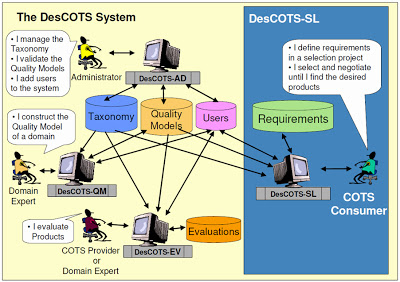There are many approaches to reuse in software engineering. Among
them, patterns hold a prominent position. "Each pattern describes a
problem which occurs over and over again in our environment, and then
describes the core of the solution to that problem, in such a way that
you can use this solution a million times over, without ever doing it
the same way twice" (Alexander, 1979).
We are interested in the use of
patterns for the requirements analysis stage, namely
Software
Requirement Patterns. The patterns applicability to this context is
clear, since requirements that appear over and over in requirements
books could be identified as the solution to particular problems in a
given context (the classical context-problem-solution scenario of
patterns).
In the PABRE framework we have currently defined a software requirements pattern catalogue with 66 patterns: 29 to be applied as non-functional requirements and 38 as non-technical ones. The catalogue is currently evolving to add functional patterns of certain software domains and also more specific patterns on information security.
The
patters are available under a creative commons license schema
(CC 3.0 BY-NC-ND) that restrict some usages
..
For other specific agreements do not hesitate to contact us. Also releva
nt information can be found in the post
Interested in Improving your Requirements Engineering Process: Try Requirement Patterns!.







